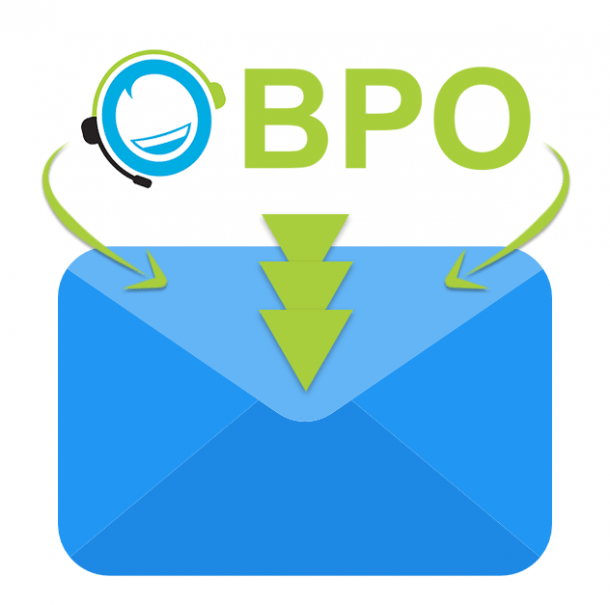In today’s competitive business world, providing excellent customer service is crucial for the success of any company. Customers expect quick and effective solutions to their problems, especially when they are calling for help. Therefore, it is essential to train your customer service representatives to handle inbound customer service calls effectively.
The Significance of Inbound Customer Service
However, in some organizations, customer service is not one of their key competencies, which could be a real problem. The revenue of these organizations can drastically plummet without warning if they fail to build excellent customer support. Because, let’s be honest, customers define the business’ success and failure. Fortunately, the rise of e-commerce businesses has introduced an alternative, and that is to hire a third-party company to handle customer services. You might have heard. It is called inbound call center services.
Brands across the globe take advantage of the Inbound call center services. Foreign big and small businesses outsource this service to English-speaking and cost-effective countries like the Philippines, where they establish remote call center offices. Think about hiring a professional hairstylist to do your hair instead of doing it yourself. Inbound call center services do just that. They make the job done for you.
Before we dive into the steps, it’s essential to understand what inbound customer service calls are. Inbound customer service calls are calls that customers make to a company’s customer service department seeking assistance with their product or service.
Taking inbound customer service calls can be a challenging task as customer service representatives need to handle different types of calls, each with its unique set of problems. Therefore, to ensure that your customers receive the best possible experience, it’s essential to provide your customer service representatives with the proper training they need to handle inbound customer service calls.
1. Greeting the Customer
The first step in taking better inbound customer service calls is to greet the customer warmly. A friendly greeting sets the tone for the entire call and helps the customer feel more comfortable. The greeting should be brief and straightforward, such as “Thank you for calling XYZ Company. This is Jane. How may I assist you?”
1.1 Pick Up the Phone
Keep in mind that In dealing with customers’ issues, time is of the essence. The digital era has changed the ways we run things. We are always on the go, and that’s what you have to remember when accepting calls from customers. They will expect quick solutions and accurate answers from polite and friendly agents who are passionate and professional about assisting customers.
1.2 Get Your Customer’s Attention in Three Seconds
You only have three seconds to have your customer’s attention. To optimize the short time span, you have to internalize enthusiasm and compassion and channel it when you speak. Customers may have no way of seeing your body language, but they can tell when you are passionate and cares to help them with what they need. It would be best if you remain calm and friendly so that customers can feel comfortable explaining their matters to you.
2. Active Listening: Listen Carefully and Attentively
Active listening is crucial in taking better inbound customer service calls. It’s essential to listen to the customer’s problem carefully and ask clarifying questions if needed. This helps to ensure that you understand the issue fully and can provide the right solution.
2.1 Empathize with the Customers
Empathy is the ability to understand and share the feelings of others. When a customer calls for help, they are usually frustrated or upset about something. Therefore, it’s essential to show empathy toward the customer and acknowledge their frustration. For example, “I understand that this is frustrating for you. I would be happy to help you find a solution.”
Nothing else matters except your customer’s needs. Assure them that you care and empathize by asking questions regarding the matter. Allow the customer to do all the talking because the more they talk, the more you’ll have the chance to build loyal relationships with the client and, most of all, close the deals.
2.2 Voice Inflection
If you wake up on the wrong side of the bed, it reflects your mood and speaking voice. Make sure that it’s not evident when talking to customers. Asking a customer to make a financial decision with a lousy disposition might jeopardize closing the deal. Make things easy for them by keeping your voice calm and friendly. A few minutes of exercises or meditation can be helpful before starting to answer calls.
2.3 Demonstrate Your Strengths
Using comprehensive product knowledge to get ahead and stand out in dealing with customers can give you a head start. Showing this strength will provide them with the idea that well-versed professionals are in charge of the inbound call center services who know the product and its policies like the back of their hand.
2.4 No Dead Air
Never let dead air take over the calls. Whenever a customer is speaking, make sure to give affirmations such as “hm” and “ah” so that customers know you are both on the same page.
2.5 Follow The Language the Customer Uses
When customers speak, listen to the type of language they use and set the tone by identifying phrases and adjectives they have said. A customer will be happy to open up to you as soon as they feel like you understand what they are trying to address.
3. Offer a Solution
After listening to the customer’s problem and showing empathy, the next step is to offer a solution. The solution should be specific to the customer’s problem and should be explained in a clear and concise manner. Knowing your policies and your products matters most in dealing with distressed customers.
3.1 Take Notes
Often, agents become too complacent that they no longer take notes. Jotting down important details can help you monitor the pace of the conversation and where it is heading. Customers will send the call to another department if they are not satisfied, so this tip can keep an agent taking one call at a time without being overwhelmed by the number of calls they receive in a day.
3.2 Confirm the Solutions
Once you have offered a solution, it’s essential to confirm that the customer understands the solution and is satisfied with it. Ask the customer if they have any questions or if there is anything else you can assist them with.
4. Summarize the Call
Before ending the call, it’s essential to summarize the call’s main points to ensure that the customer has received the correct information. This helps to avoid any misunderstandings and ensures that the customer’s problem has been resolved.
5. Thank the Customer
Finally, it’s essential to thank the customer for calling and for their business. This helps to create a positive experience for the customer and can lead to repeat business.
6. Follow Up Calls
Sometimes, the procedure entails a follow-up call to the customer.
Calling through the telephone and sending emails are the most common means to follow-up. One critical part of closing the deal or the problem is through a follow-up call. However, if a customer wishes to have transactions done via text, that can also be acceptable. This follow-up step can be essential in warding off failure. To increase your customer satisfaction, you have to set up and adhere to a professional follow-up procedure.
Recap by reviewing the notes before contacting the customer again. Bringing up the previous call’s specifics will remind the customer that you have listened to and taken their needs seriously.
Additional Tips for Taking Better Inbound Customer Service Calls
Keep The Value
Instead of following a template during a follow-up call like “I was calling back to make sure you got the email,” you should have a more compelling and detailed explanation for getting back to the customer. You could opt for an update or an option you failed to mention on the previous call as a start.
A merchant is indeed as good as the tools they utilize, which applies to inbound call center services. The telephone could be the most used and essential tool to get in touch with your market, and having the guide for agents to stick with is as important, too. They are the voice of your brand, and as long as everyone participates effectively, you can expect excellent services and impressive sales.
Use Positive Language
Using positive language can help to create a positive experience for the customer. Instead of saying “I can’t do that,” try saying “Here’s what I can do for you.”
Avoid Technical Jargon
When speaking to customers, avoid using technical jargon that they may not understand. Instead, use simple and straightforward language.
Taking better inbound customer service calls requires active listening, empathy, problem-solving skills, and effective communication. By following the steps outlined in this guide, your customer service representatives can provide a positive experience for customers and resolve their problems efficiently.
Remember always to greet the customer warmly, listen actively, show empathy, offer a solution, confirm the solution, summarize the call, and thank the customer. Additionally, using positive language, avoiding technical jargon, taking notes, and following up with the customer can help to provide an even better customer experience.
By implementing these steps and tips, your company can provide excellent customer service and build a loyal customer base.
Now that we are done with the step-by-step process, there is a better solution if you are starting to ramp up your inbound customer service efforts. Outsourcing this specific service won’t just give you more time for your core-business process but also can save you tons of revenue.
Save up to 86% of your overall costs!
Make OBPO your No.1 offshore outsourcing partner today!


